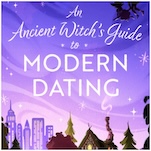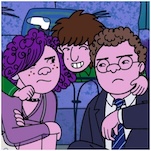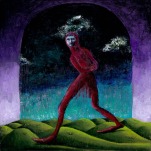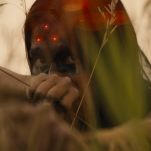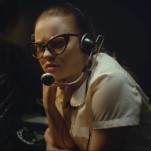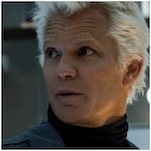Serial Killer Mockumentary Strange Harvest Slashes With Flair, But Loses Potency in the End
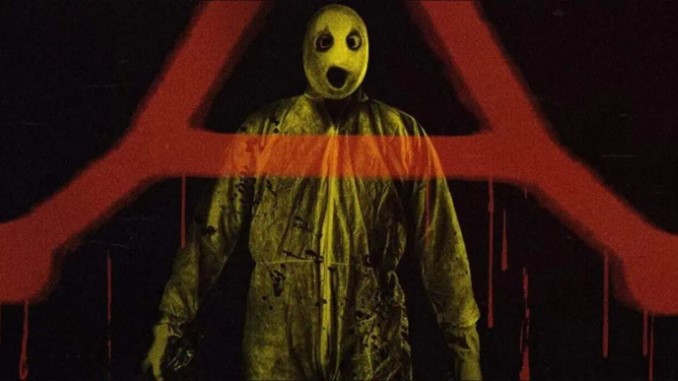
The most impressive thing about Strange Harvest, the new serial killer horror faux-documentary from one-time Grave Encounters co-director Stuart Ortiz, is how slickly it shapes itself into the familiar stylistic delivery of the American true crime docuseries genre, even when its actual content goes far beyond what is considered acceptable even in that grisly, questionable form of entertainment. Horror fans should appreciate the technical triumph of what Ortiz has assembled; one of the most pitch-perfectly designed and edited tributes (parodies?) that America’s lust for violent “true stories” has produced to date. It sounds, looks and feels so much like the sort of docuseries you’d see on Netflix or HBO that someone who didn’t know what they were watching could be forgiven for being entirely fooled by Strange Harvest, at least for a little while … and I have no doubt that there will be some gullible viewers out there who manage to convince themselves beyond all logic that what they’ve seen is “real,” just as I once witnessed a group of people swearing that they’d just watched a real demonic snuff film in a multiplex while walking out of a screening of Paranormal Activity. It’s an impressive recreation of a familiar format–but at the same time, Strange Harvest ultimately struggles a bit to maintain the chilling atmosphere that at first seems effortless.
What we have here is a perfect short film premise, easy to appreciate and admire in judicious doses, that has been stretched and strained to get it to feature length for theatrical release. This has the unfortunate side effect of taking performances that at first amplify the stylistic parody, and progressively making them ring more artificial and stilted throughout. Clever techniques are less impressive the tenth time that you see them. Shock value decays. Strange Harvest starts very strong, but eventually finds itself being dragged across the finish line via sheer determination.
With that said, it genuinely does an impeccable job of mimicking the format of so many true crime/serial killer documentaries as it tells the tale of a killer by the name of “Mr. Shiny,” who we’re told terrorized the Inland Empire of Southern California in the 1990s and early 2010s. Using a similar selection of tropes and techniques that are catalogued in frustrating Sundance standout documentary Zodiac Killer Project, Strange Harvest draws you into the comforting patter of a familiar genre in its early moments, setting up several gruesome tableaus and a macabre mystery to be uncovered. Fake news chyrons play up the local panic about the killings. Stock footage of the sort that Zodiac Killer Project dubbed “evocative B roll” unspools to give scenes flavor and grit. We’re presented with so many well-executed elements: 911 call recordings; lifestyle photos and recordings of victims and eyewitnesses; police body cam footage; file photos and crime scene photography; infographics illustrating the killer’s movements and methods. All the amusing little documentary cliches are there, such as establishing shots of the star detective interviewees walking into frame and sitting down, affixing a microphone and sipping from a water bottle, in what inexplicably appears to be an abandoned warehouse. It could scarcely nail the details of this done-to-death format more accurately.
So too do the performers largely deliver exactly what Ortiz must have wanted from them. Our primary reference point is the interviewed recollections of two detectives (Peter Zizzo, Terri Apple) who investigated the killings and hunted for the elusive, clue-leaving “Mr. Shiny,” and their delivery strikes just the right tone–they both are able to channel exactly how police figures so often sound in these documentaries, being polite but no-nonsense, stiff and non-charismatic in the way they speak as they carefully consider what exactly they’re saying for liability reasons. The longer this goes on, however, the more the carefully constructed characters seem to slip away as they repeat certain elements of their delivery, leaving a more distinctly “actorly” impression that threatens to break the immersion. It’s no surprise, perhaps, that the assembly of actors playing smaller bit parts (witnesses, family members of victims, expert consultants) come off as ultimately more convincing, because they’re allowed to be more naturalistic in their short appearances.
-

-

-

-

-

-

-

-

-

-

-

-

-

-

-

-

-

-

-

-

-

-

-

-

-

-

-

-

-

-

-

-

-

-

-

-

-

-

-

-

